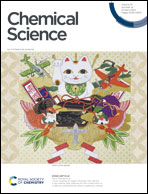Developing an abnormal high-Na-content P2-type layered oxide cathode with near-zero-strain for high-performance sodium-ion batteries †
Abstract
Layered transition metal oxides (NaxTMO2) possess attractive features such as large specific capacity, high ionic conductivity, and a scalable synthesis process, making them a promising cathode candidate for sodium-ion batteries (SIBs). However, NaxTMO2 suffer from multiple phase transitions and Na+/vacancy ordering upon Na+ insertion/extraction, which is detrimental to their electrochemical performance. Herein, we developed a novel cathode material that exhibits an abnormal P2-type structure at a stoichiometric content of Na up to 1. The cathode material delivers a reversible capacity of 108 mA h g−1 at 0.2C and 97 mA h g−1 at 2C, retaining a capacity retention of 76.15% after 200 cycles within 2.0–4.3 V. In situ diffraction studies demonstrated that this material exhibits an absolute solid-solution reaction with a low volume change of 0.8% during cycling. This near-zero-strain characteristic enables a highly stabilized crystal structure for Na+ storage, contributing to a significant improvement in battery performance. Overall, this work presents a simple yet effective approach to realizing high Na content in P2-type layered oxides, offering new opportunities for high-performance SIB cathode materials.



 Please wait while we load your content...
Please wait while we load your content...